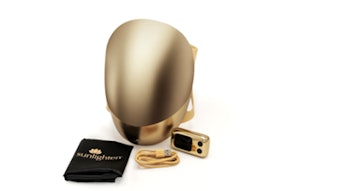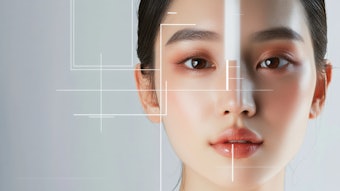
Editor's Note: This article originally appeared in the April 2008 issue of Global Cosmetic Industry magazine and was reprinted with permission. All rights reserved.
In the age of Botox* and anti-aging cosmeceuticals, handheld dermatological devices for at-home use offer consumers alternatives to invasive surgeries and treatments.
According to Tera Hawkins, co-founder of the facial esthetic technology supplier Carol Cole Company, “Ninety million Americans currently use anti-aging products or procedures.” And she forecasts that by 2010, the world market for anti-aging products will be $15.8 billion.
“Consumers worldwide continue to be willing to spend more of their dollars on anti-aging products and more time educating themselves on the products,” Hawkins says. “We will see continued proliferation of noninvasive treatments, the desire to take spa treatments home and younger adults taking preventative measures to manage their skin. Specifically, there is an 87% projected annual growth rate of home-use esthetic devices.”
Growing potential
The greatest categories of projected growth for handheld skin care devices are those targeting anti-aging, acne and hair growth, according to Marc Maisel, vice president of marketing and sales for Light Dimensions. His company, which produces medical lasers, launched its first device a year ago. Also in 2007, after 34 years spent manufacturing skin care devices for medical use, Bio-Therapeutic, Inc. chose to release devices for end-consumers.
While some device manufacturers such as Light Dimensions have decided to retail equipment directly to consumers for home use—usually working in conjunction with skin creams and serums—others, such as Bio-Therapeutic, market crossover devices to skin care and medical professionals. Bio-Therapeutic’s president, David Suzuki, says this enables professionals to provide instructional guidance to their clientele regarding the “smart technology” that is utilized by many home devices. Smart technology refers to electrical pulses, such as microcurrents, that assist in noninvasive facelifts, infrared light waves and more.
The anti-aging market
So who is buying into the derm device trend? According to Hawkins, who recently helped produce the Carol Cole Company’s device, “Twenty-five percent of annual growth in sales of anti-aging products and treatments are from baby boomers. Most are upper-middle-class women and men who believe 60 is the new 40 and are willing to use anti-aging products to look and feel better.”
Men and women ages 20 and up desire fitter faces, says Hawkins, but the largest consumer category for these products is the baby boomer generation. Of the U.S. population, Hawkins says about 30% are recognized as baby boomers.
Marketing specifically to baby boomer females, Light Dimensions’ device uses individual bursts of infrared and red light to encourage the production of collagen and elastin for younger-looking skin. Maisel says medical professionals use larger devices with thousands of LEDs—usually not directly in contact with the skin—whereas some handheld devices place light in direct contact with the skin’s surface.
So these treatments may mimic medical light treatments on a smaller level but how does its at-home use affect professionals relying on clients’ office visits for their livelihoods? According to Maisel, skin care devices are not a threat to medical professionals. Rather, their treatments can be seen as symbiotic to those found at spas and medical offices. “The more aware people are of light-based treatments, the more everyone benefits and the market grows,” he says.
Kathy Fields, a clinical professor in the department of dermatology at the University of California, San Francisco, disagrees. “Most people go to a pharmacy to self-treat for the common ailments of life such as eczema, acne, rosacea and brown spots,” she says. “A lot of people don’t get to a dermatologist.”
Spa stories
To spur sales growth, Maisel suggests dermatologists and skin care professionals recommend home-use devices for maintenance between and after medical skin or spa treatments. The duality of some esthetic devices offers professionals another avenue through which to market specialty goods. In addition, devices can be sold in conjunction with skin care cosmeceuticals.
“What we know from our office—we have about seven dermatological lasers—is that none of them work by themselves,” says Fields. “Devices alone are not the answer. They require at-home skin care regimens in conjunction with treatments. It’s the same for dermatologists’ lasers and at-home devices.”
Elaine Sauer, corporate spa director of Red Door Spa Holdings, saw the potential retail value of home-use devices. She toyed with the idea of selling clients such equipment at the Mario Tricoci Hair Salons and Day Spas she oversees, but finally, she opted against it. “More people are managing some of their routines at home with personal equipment, but like everything, the human hand does so much more for rejuvenation and draining stagnation from the face,” Sauer says. “I can’t imagine that facials will ever be replaced with these new avenues. The human touch is irreplaceable.”
With the medical avenue of injectables changing the face of the skin care business, estheticians such as Sauer are taking notice. “Since Botox was approved for anti-aging officially a few years back, I am noticing products being available via e-commerce and through various avenues today,” Sauer says. “There’s such an awareness of people wanting to remain youthful. Even people in their twenties and thirties are having Botox. We tend to think women use more products—and they do—but they want multifunctional products. Men feel the same way.”
It’s no wonder, says Fields, that hair removal and hair growth laser treatments are rising in popularity in the device category. “They can be costly,” says Fields, “but there are no sterile parts, so you can give them to others to use. Some of these devices can be used by the whole family.”
Regulations
Unlike the natural and organic personal care market, which has skin care industry professionals debating standards of certification, not all cosmetic device manufacturers have pursued government-regulated approval or clearance. However, in the case of products considered to not pose significant risk to the general public by the U.S. Food and Drug Administration (FDA), some companies believe such clearance is unnecessary.
By FDA standards, some of Bio-Therapeutic’s devices are considered Class I, according to Suzuki, meaning the devices are only required “to be registered with the FDA and manufactured under the Good Manufacturing Practices.” Carol Cole Company’s device uses microcurrents to tone and lift skin; however, as a Class II device, it falls under more rigorous FDA guidelines, such as labeling requirements, stringent performance standards and post-market surveillance. These guidelines extend even further with Class III devices. But Hawkins insists maintaining such high regulatory controls in the design and manufacturing of home-use devices affords consumers a higher level of protection.
Fields concurs, suggesting device manufacturers offer a 30–60 day money-back guarantee to set consumers’ minds at ease. “The customer today is smart and doesn’t want to pay a lot of money for hope in a jar. Everyone wants a fast fix, but there’s a price limit,” Fields says. Her company, Rodan + Fields, currently has researchers scientifically testing blue light therapies for possible use in a future home skin care device, and Fields’ biggest concerns are the devices currently in the market that don’t work as intended. “That annoys us to no end,” she says.
Device expectations
The key seems to lie in convenience, where at-home devices are on top of the heap, but there are still skeptics, such as Rick Krupnick, CEO of Light BioScience LLC, a manufacturer of professional-grade medical devices. “People want to know the product they’re getting is safe, effective and fast,” he says.
Although he says women tend to be more compliant when it comes to following cosmetic treatment protocol, Krupnick believes men are beginning to show interest in the market category as well. According to Priti Odedra, vice president of business development of the Revenir and Charme Skincare Systems, men are learning more about what they can do at home to reverse the signs of aging. “We’re finding men are more open to looking at a device-type process versus a gel or lotion,” she says. “Just the fact that it’s a gadget has helped us.”
Of course, with technology comes education, and Sauer and Odedra both agree they’ve noticed an increase in knowledgeable consumers wanting to reverse or prevent the signs of aging. Sauer says even teens are recognizing the advantages of anti-aging treatments and skin care devices. “Young people and men are a growing segment of our business, and we have to adjust the way we market our menus to these new categories if we want to attract them and make them feel at home,” Sauer says, adding that her own 11-year-old son asked for a spa massage for his birthday.
And if the market continues the way it is, perhaps next year he’ll ask for a handheld acne-zapping derm device.










